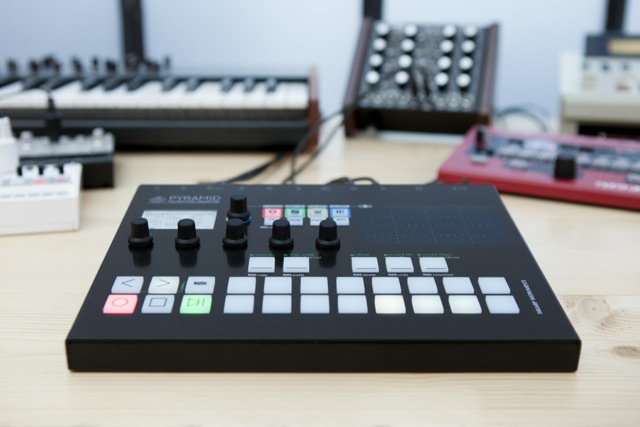PARIS, FRANCE: avant-garde musical hardware researcher and developer Squarp Instruments is proud to announce that it is already accepting preorders on its inaugural Pyramid Polyrhythmic Sequencer breakthrough — an advanced hardware standalone sequencer running proprietary PyraOs realtime processing firmware and boasting (multiple) MIDI, USB, CV/Gate, and (Sync48- and Sync24-configurable) DIN Sync connectivity, together with a host of fanciful features belying its compact and bijou form factor — as of May 21…
Most notably, and arguably an absolute rarity in this day and age, Pyramid Polyrhythmic Sequencer is fully polyrhythmic, meaning different and unusual time signatures can be set for each of its 64 tracks to cleverly create shifted-beat sequences — set a track to 4/4 and add other tracks to simultaneously run with it in 5/4, 6/8, 15/8, or whatever — to bring stirring new musical flavours to productions. Pyramid Polyrhythmic Sequencer… it is incontestably an appropriate appellation, after all! Apart from that, though, what makes this standalone sequencer so special and also why resolutely return to hardware in this day and age of commonplace software-based sequencing solutions, courtesy of all-singing, all-dancing DAWs (Digital Audio Workstations)?
Well, to truly get a feel for the flexible future of state-of-the-art and easy-to-use hardware sequencing in the present, perhaps it pays to look to the past? Which is exactly what the forward-thinking research and development team at Squarp Instruments did. “Our aim was to create a hardware sequencer in ‘sync’ with the new styles of electronic music being written nowadays,” notes company co-founder and R&D engineer Tom Hurlin. “There’s a huge gap in the market for this, which is kind of weird, because most popular music from the early-Eighties to the late-Nineties was produced using sequencing hardware. Hip-hop, for example, originated on the MPC series, which actually revolutionised all kinds of music — Madonna to Bryan Ferry to Whitney Houston. How come these machines were suddenly replaced by the computer?”




